Unrivalled Harbor Expertise
in East Boston
Expertise, coordination, and communication are vital components of Boston Harbor pilots’ work, from planning the leap across open water to warning recreational boats out of the shipping channel.
Photo by David J. Weaver
The Boston Pilot boat and tanker travel side-by-side at identical pre-arranged speed and direction. When the pilot judges the alignment to be optimal, he jumps to the hanging ladder and climbs aboard.
By law, all ships over a certain size—fuel tankers, container ships, even luxury yachts—must have a commissioned pilot on board to enter the harbor. Boston’s eight pilots hold “Unlimited Ocean Master” licenses issued by the Coast Guard; they can command any size vessel. Their decades of experience and intimate knowledge of the harbor’s underwater landscape, tides, and currents enable them to bring every ship to dock safely. They work alternating weeks and are available every hour every day—in all weather.
Ship captains—and ship owners—recognized centuries ago the value of having on board a mariner with knowledge of local conditions. In 1783, the Boston Marine Society, an association of sea captains, advocated for “the establishment of a regular, skillful system of pilotage” in Massachusetts. For decades thereafter they managed the pilots. Today, two governor-appointed commissioners oversee the service that protects the environment and commercial shipping.
The Boston Pilot boats bring pilots about 10 miles off shore, where they board incoming vessels, give compass and speed instructions, and ensure ships stay within the main shipping channel. Some ships approach through The Narrows, the original entrance to Boston Harbor that threads its way around islands and shoals.
Map by Ken Dumas
For decades, schooners served as the harbor’s pilot boats, ferrying pilots beyond the lighthouses to board incoming ships. In 1941, the Boston Pilots Association bought the Roseway, the last schooner to serve as a pilot boat for Boston Harbor. She filled that role until 1973.
Courtesy of the Duval family. Paul Duval’s maternal grandfather, Joseph P. Sullivan, served as a commissioned Boston Harbor Pilot from 1939 until his retirement in 1974.
Sign Location
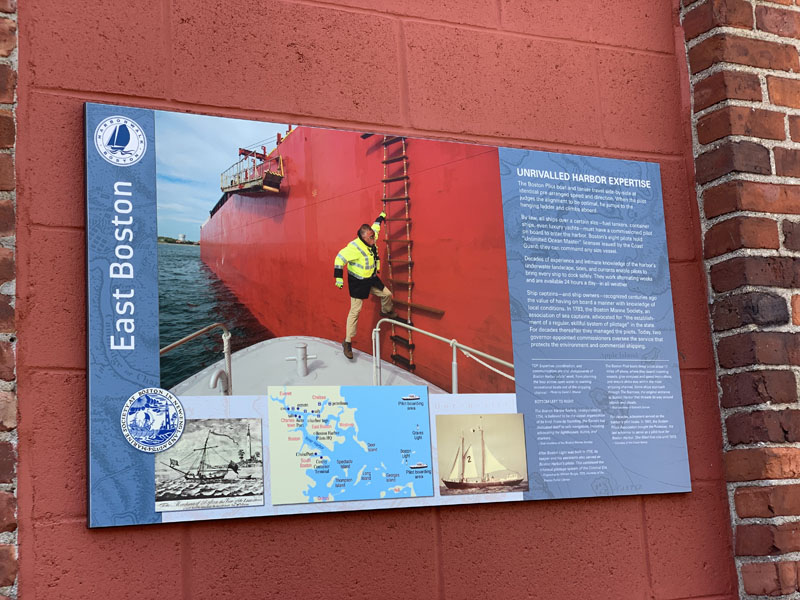
More …
Resources
- Baker, William A. A History of the Boston Marine Society, 1742-1981. Boston Marine Society, 1982.
- Boston Looks Seaward: The Story of the Port, 1630-1940. Compiled by workers of the Writers’ Program, Work Project Administration (WPA), Bruce Humphries, Inc. 1941.
- Bunting, W.H. Portrait of a Port: Boston, 1852-1914. Belknap Press, Harvard University Press, 1971.
- Cunliffe, Tom. Pilots: The World of Pilotage Under Sail and Oar. Volume 1. Pilot Schooners of North America and Great Britain. Le Chasse-Marée/Maritime, 2001.
- Eastman, Ralph M. Pilots and Pilot Boats of Boston Harbor. Second Bank-State Street Trust Company, 1956.
- Treffeisen, Beth. “The Tricky Work of Guiding Massive Ships into Boston Harbor,” Boston Globe Magazine. July 11, 2015.
- About Harbor Pilots
- NPR story
Acknowledgments
- Warm thanks to the Harbor Pilots for their support and assistance.
- Thank you to the Boston Marine Society whose generous support made this sign possible.
- Our gratitude to the Perkins School for the Blind and David W. Cook for their partnership in creating the audio files.

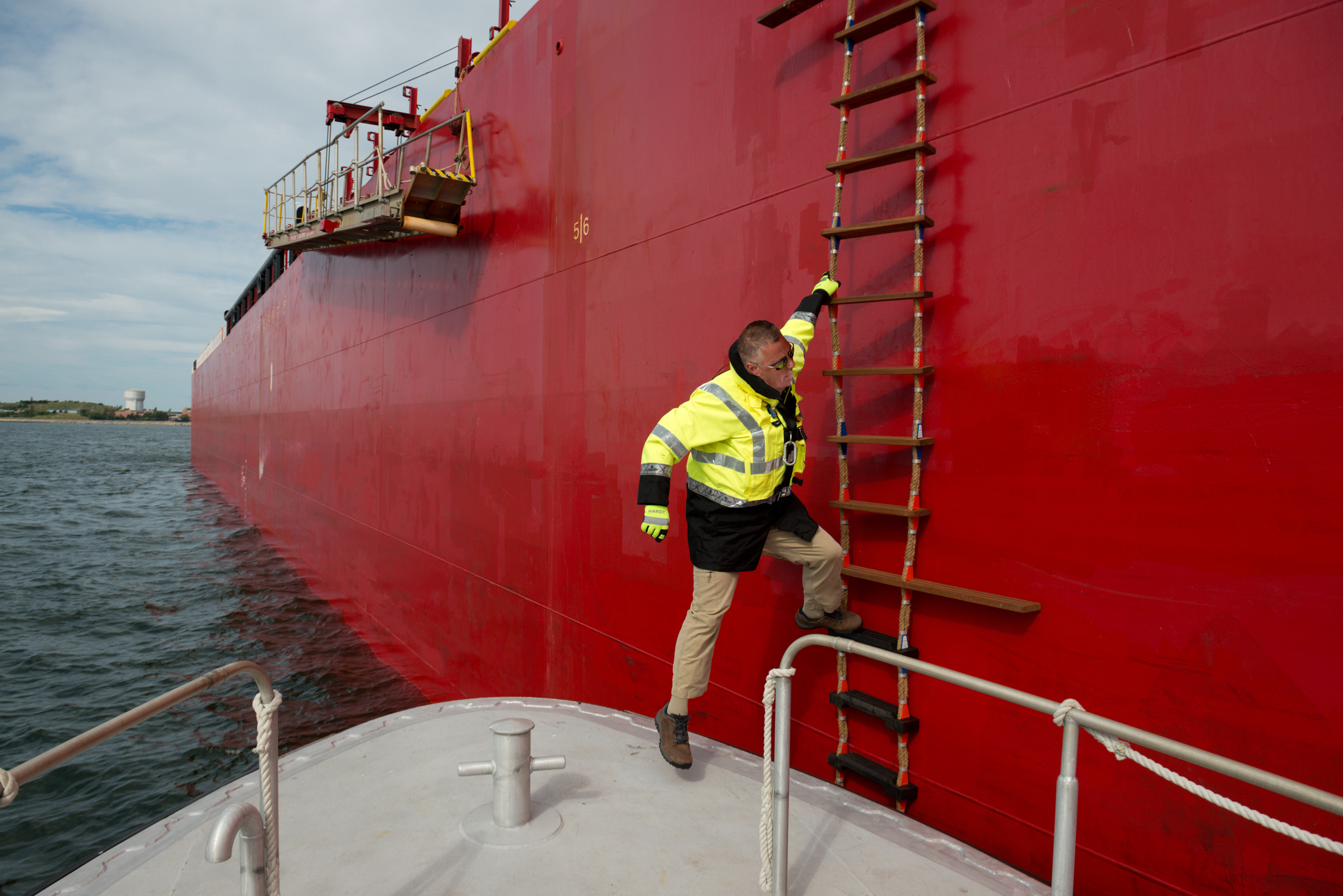
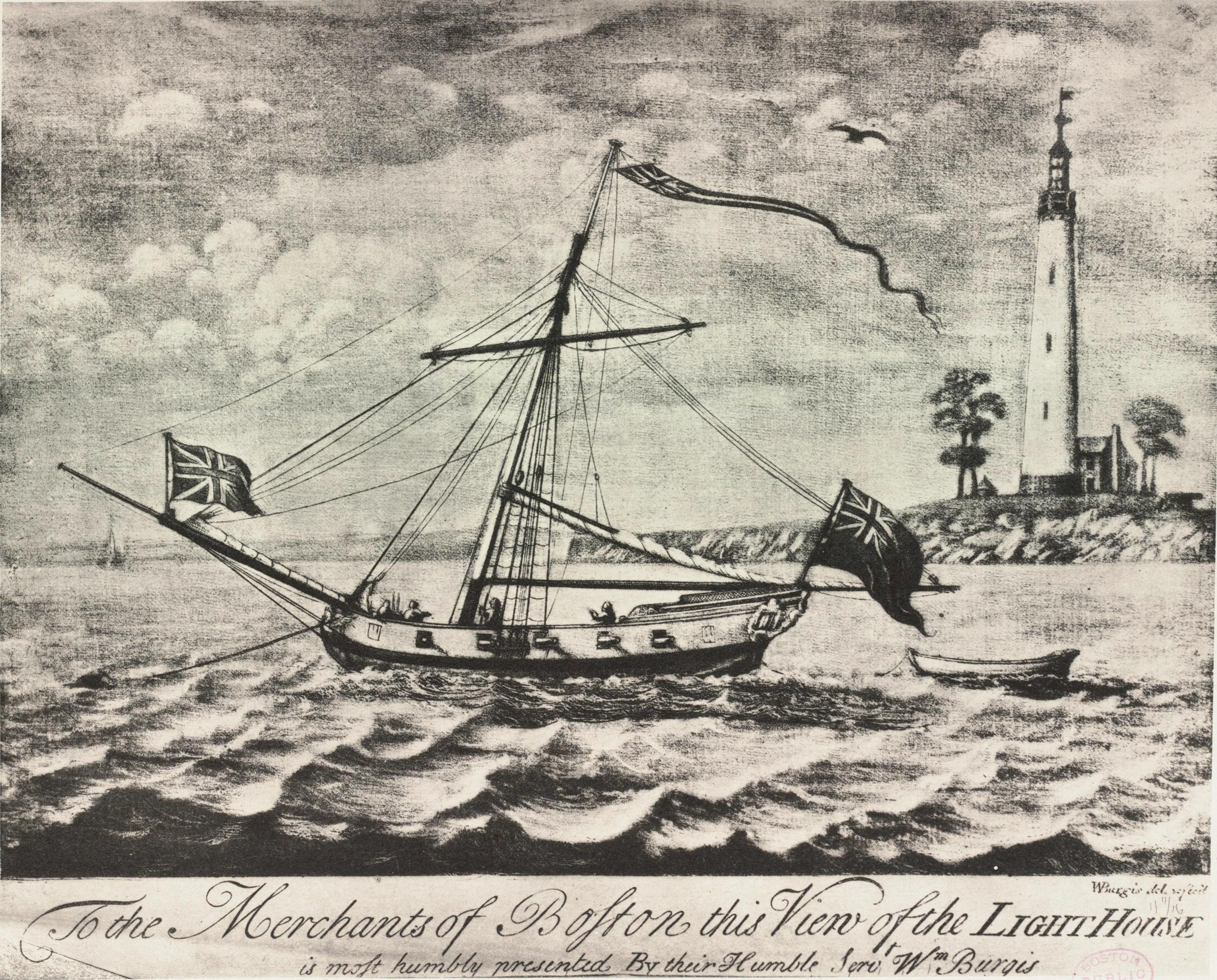
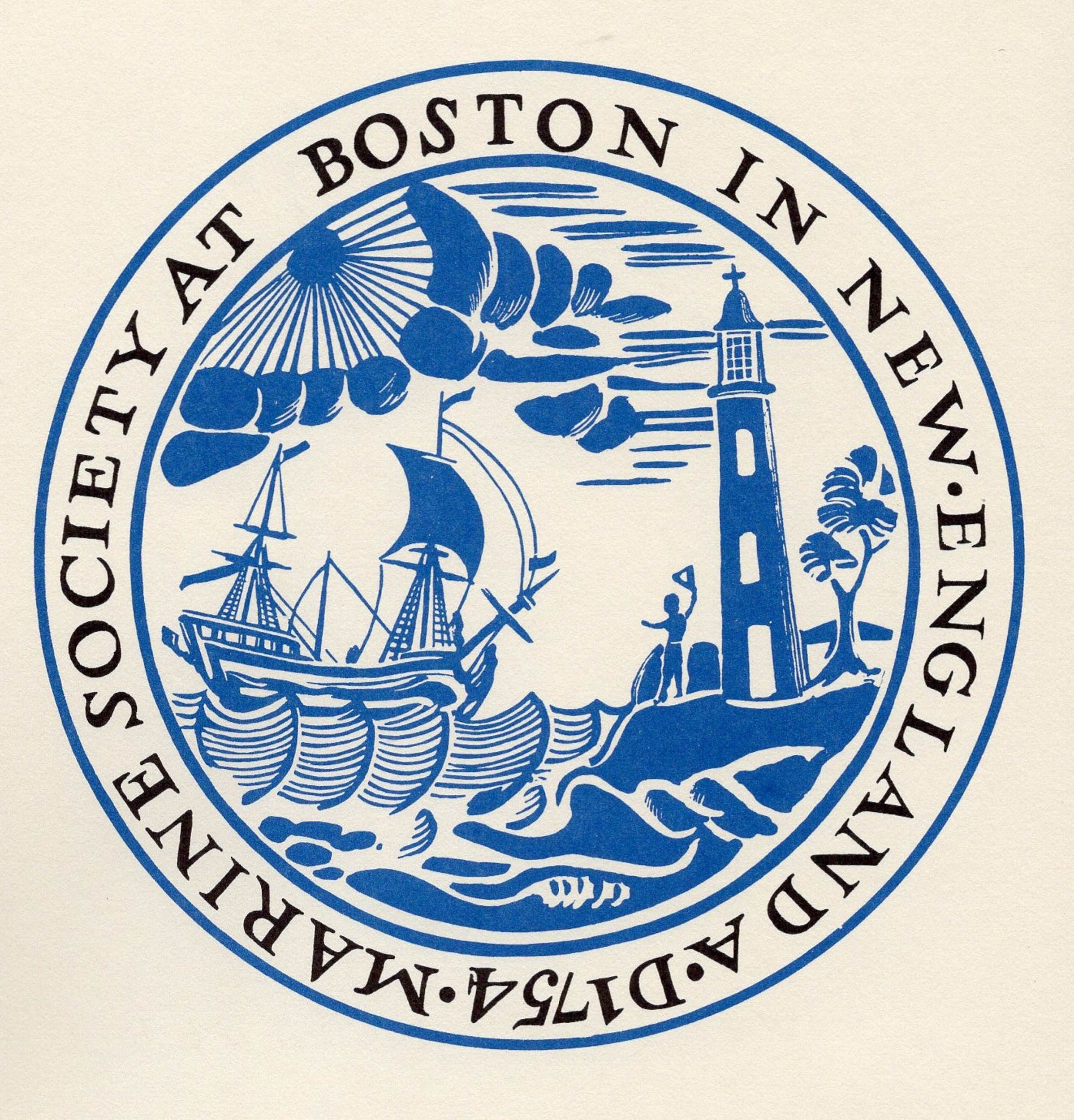

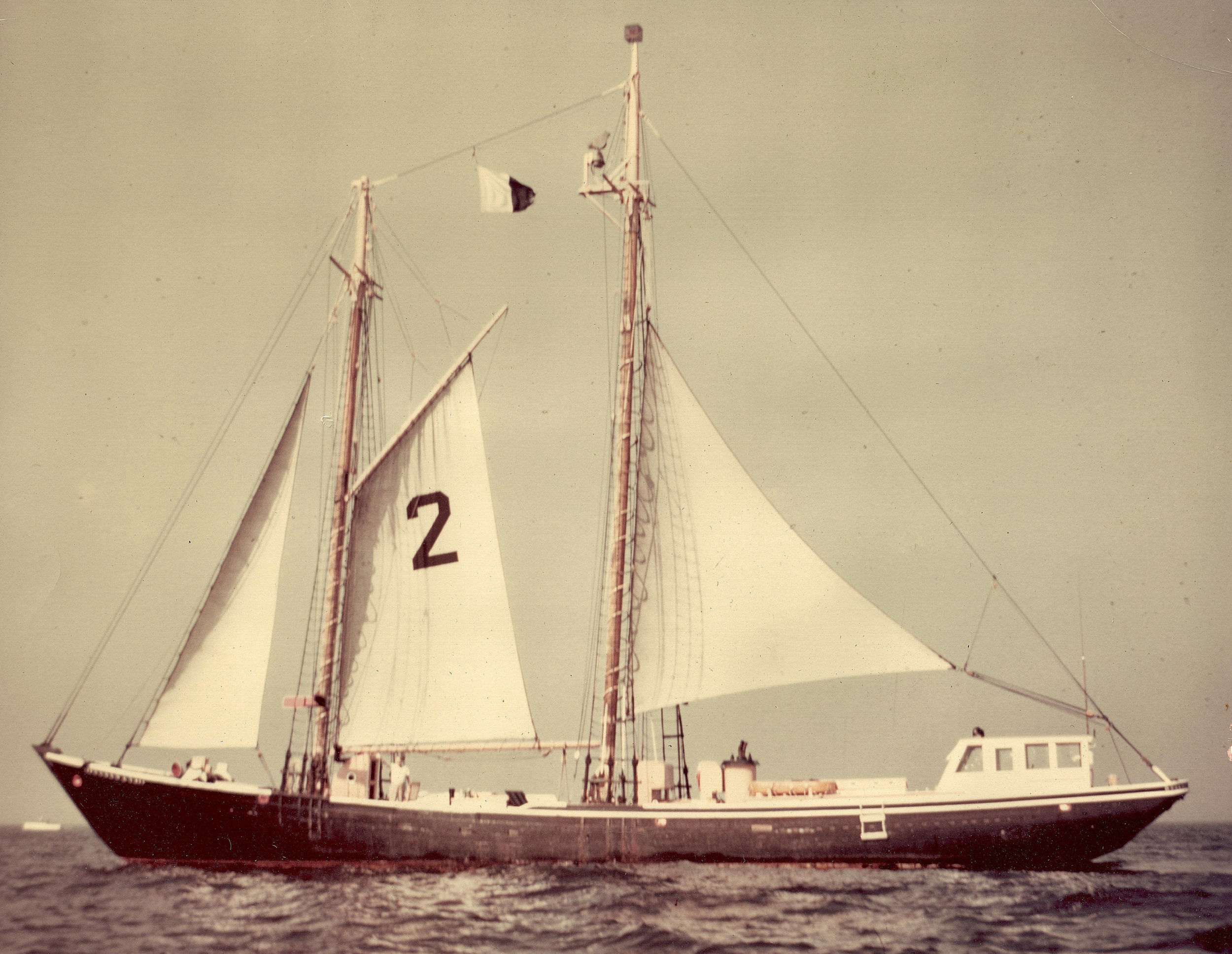

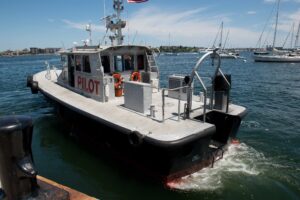
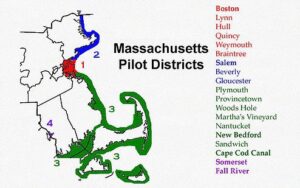
 MA in 1925, the Roseway is easily recognized by her dark red sails. Though the schooner was used occasionally to fish, Roseway was specifically built to race in the annual competitions against the Canadian fishing fleet. It was on this basis that the schooner was designated a National Historic Landmark in 1997.
MA in 1925, the Roseway is easily recognized by her dark red sails. Though the schooner was used occasionally to fish, Roseway was specifically built to race in the annual competitions against the Canadian fishing fleet. It was on this basis that the schooner was designated a National Historic Landmark in 1997.